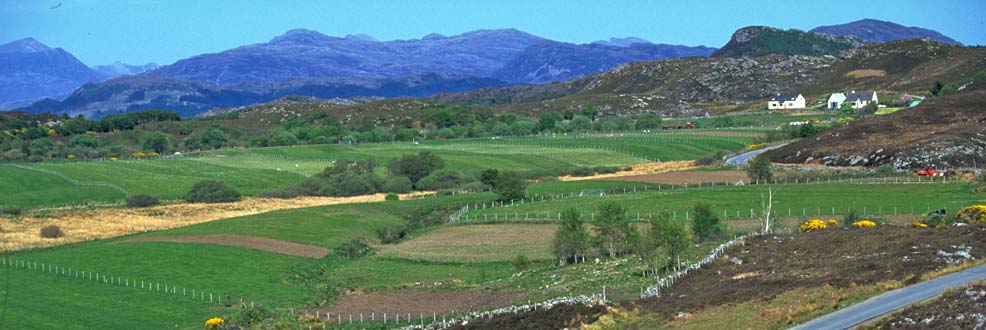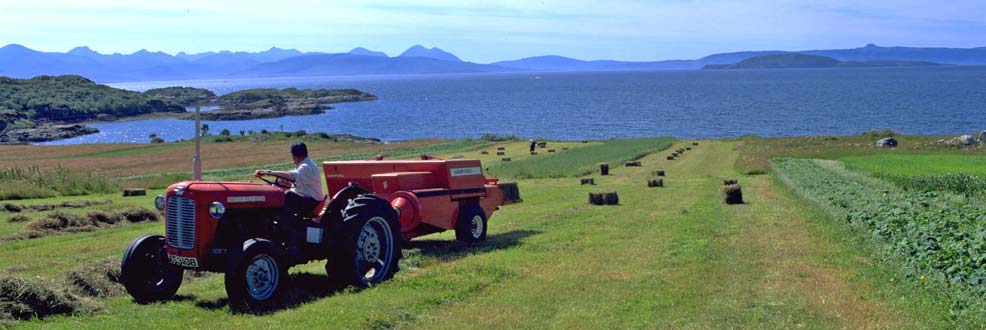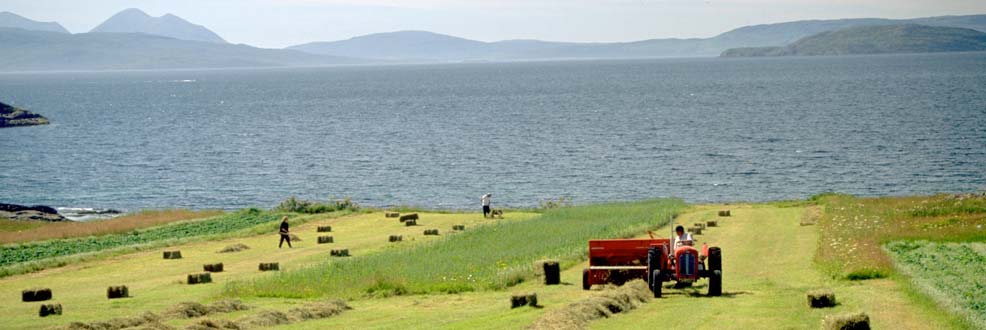Sheep
Scottish Further Education Unit – Rural Skills Intermediate 1: Animal Husbandry: An introduction (Sheep) contains a reference section, a Tutor Support section and a Student Support section with notes and activities under the following headings:
- Welcome to Animal Husbandry (Sheep)
- Sheep Husbandry
- Basic Characteristics of Sheep
- How to tell Male from Female Sheep
- Signs of Health
- Preparing Sheep Accommodation and Mucking Out
- Bedding
- Feeding and Watering Sheep
- Practical Activity Worksheets
- Practical Assessment Checklist
- Further Revision
- Glossary of Terms
Scottish Further Education Unit – Rural Skills Intermediate 1: Animal Handling: An introduction (Sheep) contains a Reference section, a Tutor Support section and a Student Support section with notes and activities under the following headings:
- Welcome to Animal Handling (Sheep)
- What is Sheep Handling all about?
- Understanding Sheep
- Being Safe around Sheep
- Moving and Restraining Sheep
- Tips and Techniques for Handling Sheep
- Practical Activity Worksheets
- Practical Assessment Checklist
- Further Revision
- Glossary of Terms
A comprehensive list of sheep breeds found in the UK, together with their characteristics, is provided by the National Sheep Association.
Another list of breeds and characteristics from the Smallholder Series.
What breeds are suitable for crofting?
Factors that need to be taken into consideration when choosing a suitable breed:
- Use – lamb, mutton, wool, milk?
- Hardiness – ability to withstand harsh weather conditions
- Adaptability – ability to adapt to different land and terrains
- Handling – how easy they are to handle, including their size, temperament and whether they have horns
- Carcass quality (lamb and mutton) – size of joint, flavour and proportion of saturated fat
- Dairy – the Friesland breed and the British Milksheep are those known for their milk production, with the former being particularly prolific
- Wool – quality, quantity and colour of the wool may be important considerations if the sheep are being kept for their fleeces
- Ease of lambing – important to consider how often problems occur at lambing
- Maternal qualities – caring for their lambs
- Longevity – the length of their breeding life
- Browsing – their ability to make good use of the vegetation available rather than just needing to graze high quality grass.
Some breeds to consider:
Hebridean - The Hebridean is a small, hardy breed, is a very active and long-lived sheep, ewes lamb very easily and are often still lambing well at ten years or more. It thrives on all types of grazing and responds well to all management systems.
Shetland - The Shetland is a primitive, unimproved breed noted for its natural hardiness, lambing ease, longevity, and ability to survive under harsh conditions. It is one of the smallest breeds of sheep and is known primarily for their production of colourful wool upon which the Shetland woollen industry is based. Shetland comes in one of the widest ranges of colours of any breed. There are 11 main colours as well as 30 markings, many still bearing their Shetland dialect names. Shetlands naturally shed their wool during late spring/early summer.
Scottish Blackface - The outstanding qualities of the breed are survivability, adaptability and versatility, with the ability to fit into any farming situation. They are one of the hardiest sheep breeds in the country and are the backbone of the Scottish sheep industry.
Cheviot - The Cheviot originated in the Cheviot Hills, on the border of England and Scotland. Recognized as a hardy sheep as early as 1372, Cheviots did well in those bleak, windswept conditions, with their strong constitution, easy lambing, well developed mothering instinct, and fast maturity. The Cheviot ewe can be found grazing up to 3,000 feet and is expected to live off the hill throughout the year.
Lleyn - A medium sized lowland sheep weighing up to 70kg at maturity, renowned for their hardiness, prolificacy, easy lambing, strong mothering instinct, milkiness and easy handling. The wool is white free from any coloured fibres or kemp and is of good length, dense and of high quality.
Scotch Mule – a crossbred animal from a Blackface ewe and a Bluefaced Leicester tup. The conformation and hardiness of the Blackface married to the prolificacy and the milking ability of the Blueface Leicester. Combined with the mothering instinct of both we have a female, which given the correct management, will not only produce 200% lambing but is capable of nursing them whether it be for early market or finishing at grass.
The National Sheep Association is a resource for the sheep industry in the UK and provides some background to the unique nature of UK sheep farming.
The Smallholder Series has a vast array of articles about keeping sheep, on a relatively small scale, from ‘Be Prepared for Tupping Time’ to ‘Managing Internal Parasites in Sheep’.
Lambing
From ‘A Beginner’s Guide to Raising Sheep’ by Sheep 201 (USA) – a comprehensive, illustrated guide to the lambing process.
The Smallholder Series (Practical Guides for the Serious Smallholder) has a 5-part series of articles related to lambing:
Lambing 1 - Pregnancy Management & Nutrition of the Ewe
Lambing 2 - Metabolic Diseases of the Ewe
Lambing 3 - When the Shepherd Needs to Intervene, and When to Call the Vet
Lambing 4 - Helping the Newborn Lamb
Lambing 5 - The Growing Lamb
Normal Lambing with Adam Henson - Published on 19 Apr 2013
This is an excerpt from the third DVD in the "Sheep on your Smallholding" series -- "The Breeding Flock". Here, Adam describes a normal lambing procedure and the visible indicators of a ewe in labour. This is followed by a visual precis of the three stages of labour. The full programme is available on DVD from The Smallholder Series web site.
A Tricky Lambing with Adam Henson - Uploaded on 2 Sep 2010
Adam Henson and vet Mike Glover find a young ewe in difficulty, they quickly discover that she is trying to give birth to a lamb -- just its head is presented and in this position both the ewe and her lamb are in danger without rapid, expert intervention. The full version is available on DVD from The Smallholder Series web site.
Lambing Live (BBC) 2011 -Series 2 Episode 1 Published on 1 Sep 2012
Kate Humble and Adam Henson follow the life and death drama of lambing.
All the lambing Live series are available to be viewed on YouTube.
Lambing problems from XL Vets (Farmers Weekly Video) – Uploaded on 5 Jan 2012
How to deal with difficult lambing -- a look at the correct placement of lambing ropes and other tools to ensure safe lamb delivery.
Basic Lamb Care with XL Vets (Farmers Weekly Video) - Uploaded on 5 Jan 2012
Best practice advice on issues such as naval ill, joint ill, entropian/turn-in eyelids in lambs, as well as more routine procedures such as orf vaccination, castration and tail docking.
Lamb tail docking with XL Vets (Farmers Weekly Video) - Uploaded on 5 Jan 2012
A look at tail docking in lambs, correct positioning of the rubber ring, correct age to perform procedure and how to maximise lamb welfare.
Lamb castration with XL Vets (Farmers Weekly Video) - Uploaded on 5 Jan 2012
A look at castration in lambs, when should it be performed, at what age and how to perform the procedure using rubber rings to optimise lamb welfare.
Rules of Colostrum For Lambs – part of the Sheep Management section, SAC Consulting, from SRUC.











